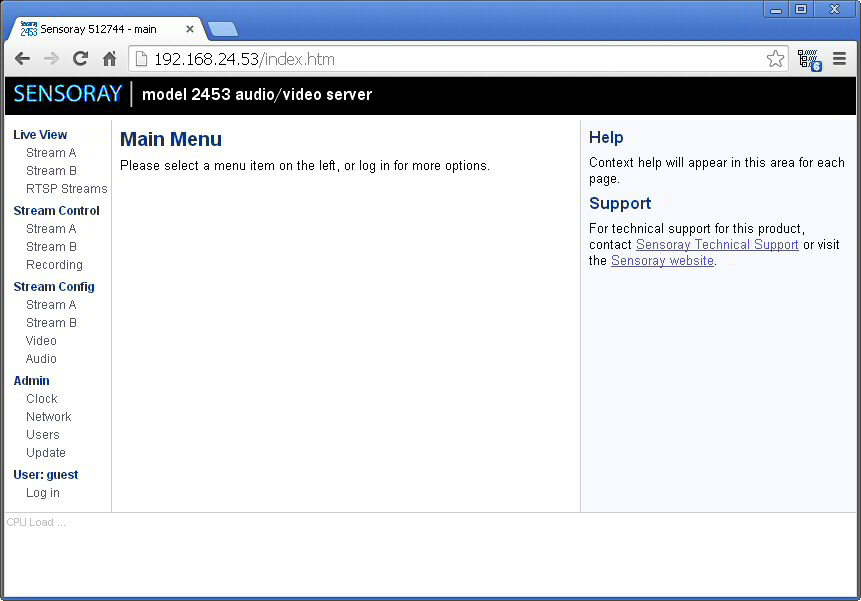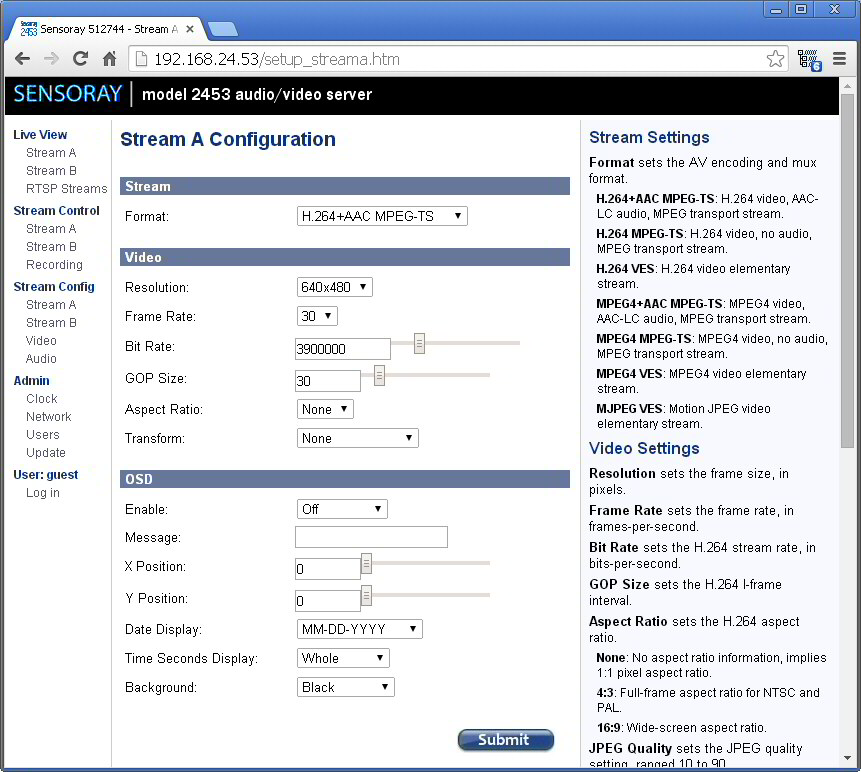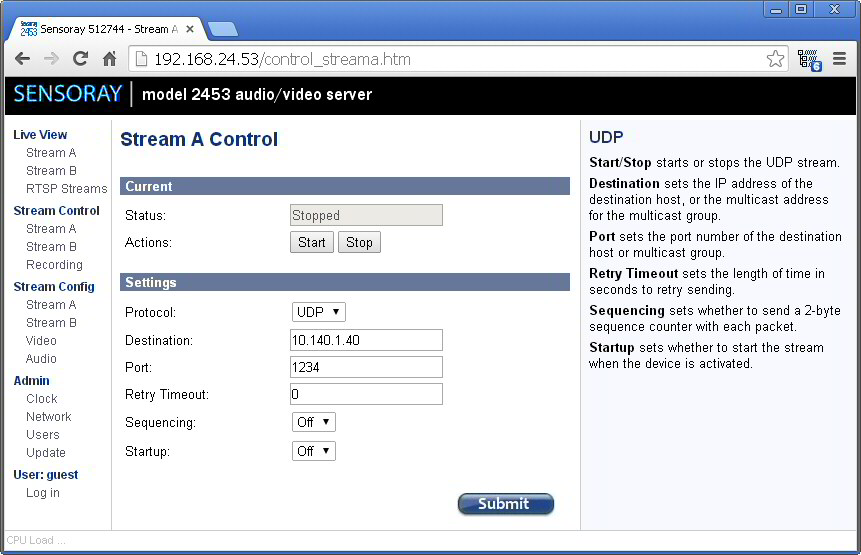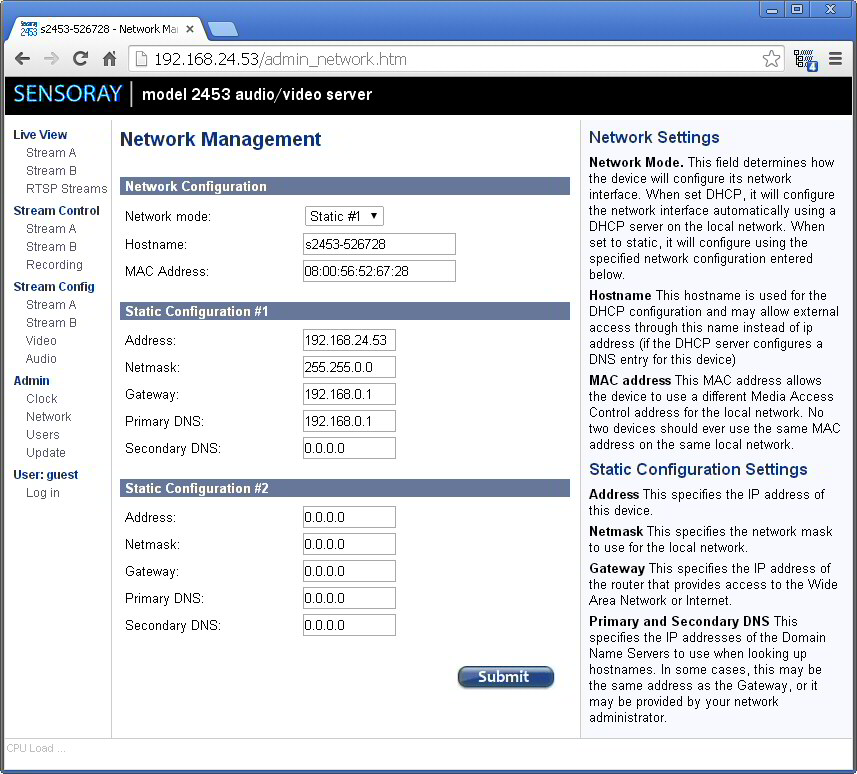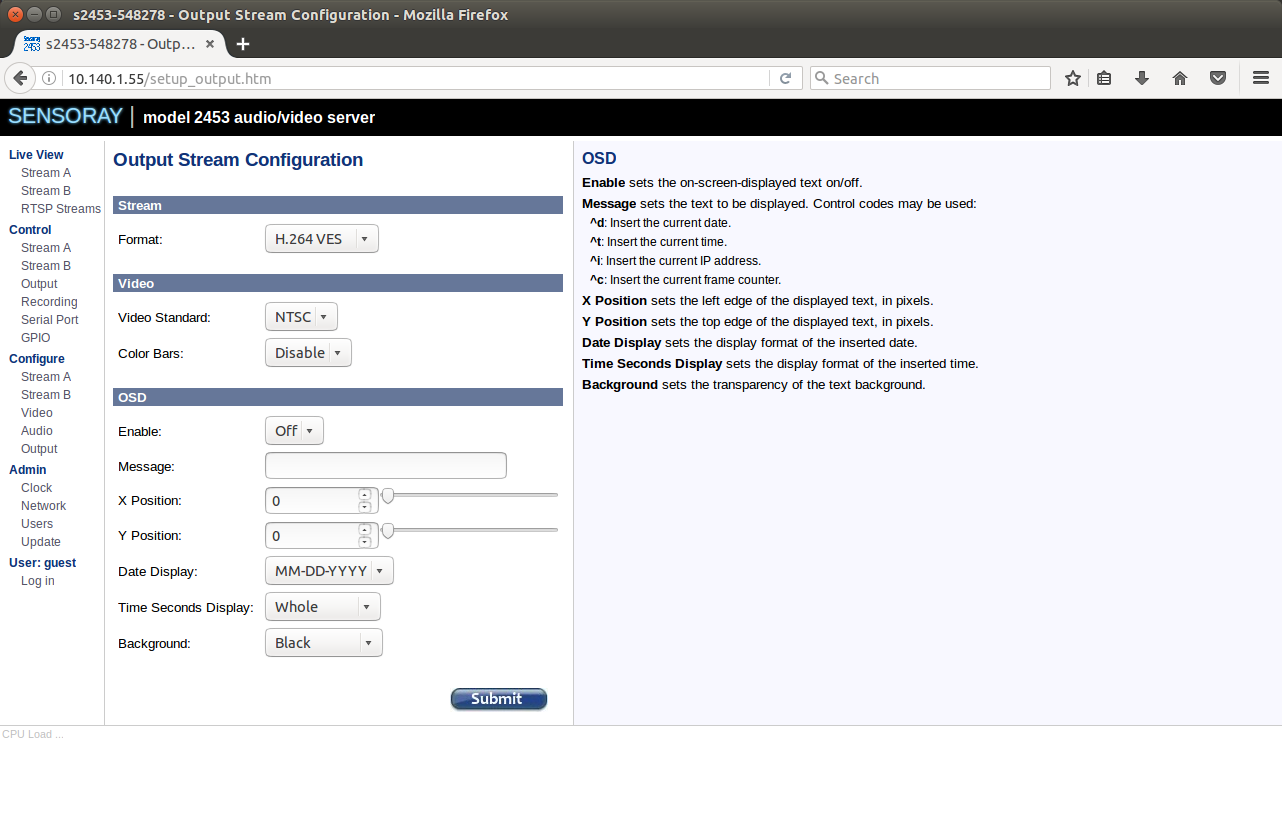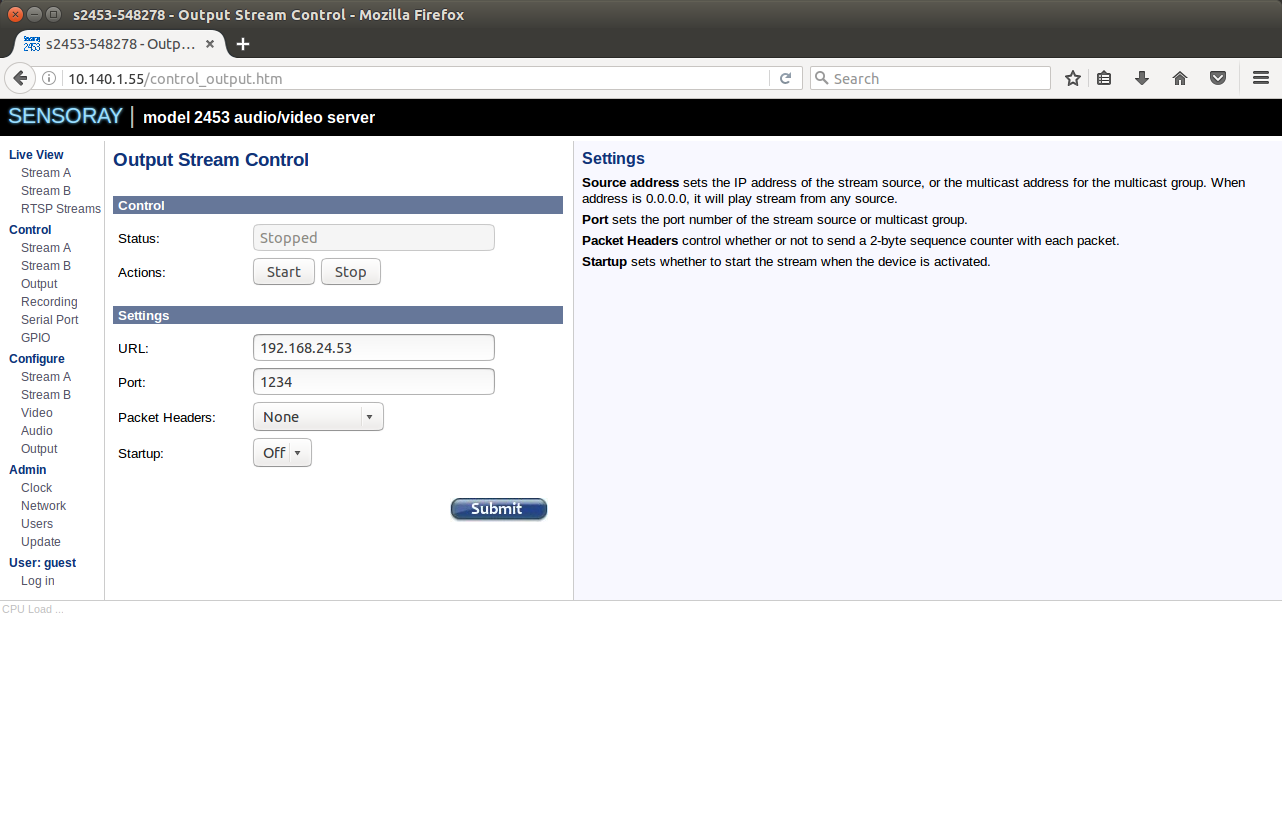Difference between revisions of "2453 Decoder"
(Created page with "== Using a 2453 == A 2453 can take an NTSC or PAL composite video stream and convert it to a digital format or take one of those streams and output NTSC or PAL composite vide...") |
|||
| Line 7: | Line 7: | ||
To Encode video a composite video source must be connected to video in and Ethernet must be connected. | To Encode video a composite video source must be connected to video in and Ethernet must be connected. | ||
| − | Using a web browser connect to the 2453 | + | Using a web browser connect to the 2453 |
| − | Once those setting are correct Follow the link Control Stream A | + | [[File:2453index.jpg]] |
| + | |||
| + | follow the link on the left side: Configure Stream A | ||
| + | |||
| + | [[File:2453configA.jpg]] | ||
| + | |||
| + | Here the various parameters of the encoder can be controlled. | ||
| + | |||
| + | Once those setting are correct Follow the link Control Stream A | ||
| + | |||
| + | [[File:2453controlA.jpg]] | ||
| + | |||
| + | Here the address of the device receiving the digital stream and the port number open on that device must be entered. | ||
The receiving device should be ready to receive before the sending device starts sending. | The receiving device should be ready to receive before the sending device starts sending. | ||
| Line 17: | Line 29: | ||
To Decode video a composite video display must be connected to video out and Ethernet must be connected. | To Decode video a composite video display must be connected to video out and Ethernet must be connected. | ||
| − | Using a web browser connect to the 2453 which will receive the digital stream | + | Using a web browser connect to the 2453 which will receive the digital stream |
| + | |||
| + | note: each device on an Ethernet network must have a unique address, if two 2453's are being used the address of at least one must be changed through the Admin Network page | ||
| + | |||
| + | [[File:2453AdminNet.jpg]] | ||
| + | |||
| + | Follow the link on the left side: Configure output | ||
| + | |||
| + | [[File:2453configOut.png]] | ||
| + | |||
| + | Here the various parameters of the decoder can be controlled. The stream format setting must match the stream format setting of the encoder, ie if the encoder is configured to H264 VES the decoder must be set to H264 VES. | ||
| − | + | Once those setting are correct Follow the link Control Output | |
| − | + | [[File:2453controlOut.png]] | |
| − | + | Here the address of the device sending the digital stream and the port number to open to that device must be entered. The packet headers must be the same as on the sending device. | |
The receiving device should be ready to receive before the sending device starts sending. Click start on the receiving device before clicking start on the sending device. | The receiving device should be ready to receive before the sending device starts sending. Click start on the receiving device before clicking start on the sending device. | ||
Latest revision as of 13:06, 6 December 2016
[edit] Using a 2453
A 2453 can take an NTSC or PAL composite video stream and convert it to a digital format or take one of those streams and output NTSC or PAL composite video.
[edit] Encoding video
To Encode video a composite video source must be connected to video in and Ethernet must be connected.
Using a web browser connect to the 2453
follow the link on the left side: Configure Stream A
Here the various parameters of the encoder can be controlled.
Once those setting are correct Follow the link Control Stream A
Here the address of the device receiving the digital stream and the port number open on that device must be entered.
The receiving device should be ready to receive before the sending device starts sending.
[edit] Decoding video
To Decode video a composite video display must be connected to video out and Ethernet must be connected.
Using a web browser connect to the 2453 which will receive the digital stream
note: each device on an Ethernet network must have a unique address, if two 2453's are being used the address of at least one must be changed through the Admin Network page
Follow the link on the left side: Configure output
Here the various parameters of the decoder can be controlled. The stream format setting must match the stream format setting of the encoder, ie if the encoder is configured to H264 VES the decoder must be set to H264 VES.
Once those setting are correct Follow the link Control Output
Here the address of the device sending the digital stream and the port number to open to that device must be entered. The packet headers must be the same as on the sending device.
The receiving device should be ready to receive before the sending device starts sending. Click start on the receiving device before clicking start on the sending device.
